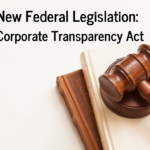When purchasing a business, buyers often prefer that the transaction be structured as an asset purchase rather than a stock purchase. In a stock purchase, the buyer purchases the target company as an entity, and therefore assumes the seller’s liabilities, since the company being acquired retains all of its liabilities as a matter of law. By restructuring the transaction as an asset purchase rather than a stock purchase, a buyer is provided with a much greater level of protection against liability for the target company’s obligations.
The law in most jurisdictions has traditionally held that when one company sells all of its assets to another, the buyer does not become liable for the debts and liabilities of the selling company. This is still true to a large extent, and we frequently recommend structuring a transaction as an asset purchase in order to protect the buyer from the liabilities of the business being acquired.
However, over the past several years, the theory of successor liability has evolved and expanded as a result of a series of clashes between the policy in favor of allowing a company to sell its assets in an unrestricted manner, balanced against other policies, such as providing a source of relief for injured parties or other claimants. As a result, in some cases, a purchaser of assets may be held liable for certain liabilities of the seller. Whether or not an entity buying the assets of another may be held liable for the liabilities of the seller is highly fact specific, and may depend upon the type of liability at issue, the jurisdiction in which the claim is made, and other factors which the courts may take into account in balancing these conflicting policies.
In this eight part series, we review exceptions to the general rule that a purchaser of the assets of a business is not responsible for liabilities incurred by the seller prior to the sale.
Part Six: Product Line
The “product line” exception imposes liability for injuries caused by a defective product where the buyer acquires all or substantially all of the manufacturing assets of the company that produced the defective product and undertakes essentially the same manufacturing operation as the seller. This exception is a function of the following considerations:
- The virtual destruction of the plaintiff’s remedies against the original manufacturer caused by the buyer’s acquisition of the business;
- The buyer’s ability to assume the original manufacturer’s risk-spreading role; and
- The fairness of requiring the buyer to assume a responsibility for defective products that was a burden necessarily attached to the original manufacturer’s goodwill being enjoyed by the buyer in the continued operation of the business.
Unlike other exceptions, which are applicable to a variety of claims, this exception is unique to product liability cases where strict liability of the seller is applicable. Because the product line exception imposes successor liability despite the fact that the buyer did not manufacture or sell the allegedly defective product and place it into the stream of commerce, the majority of courts have rejected the product line theory as an unwarranted expansion of strict liability principles that “one who sells any product . . . is subject to liability for physical harm thereby caused to the . . . user or consumer . . . .” Restatement (Second) of Torts § 402A (1965). This exception has been adopted in California, New Jersey, New Mexico, Mississippi, Pennsylvania and Washington. Most other states have rejected this theory.
To lessen the risk of liability under the product line theory, we often recommend that the seller be required under the terms of the Asset Purchase Agreement to carry tail insurance or similar coverage to provide insurance against claims arising after closing related to products manufactured by the seller prior to closing, or for the buyer to coordinate with its own insurance carrier to assure coverage for these types of claims.
(Read Part 5: Fraudulent Transfer of Assets…)
(Watch for Part 7: Duty to Warn…)
If you have questions about how to structure the purchase or sale of a business, please contact KDDK attorney Jeffrey K. Helfrich at jhelfrich@KDDK.com or (812) 423-3183, or contact any member of the KDDK Business Law Practice Team.
About the Author

Jeff Helfrich is a business attorney with more than 30 years’ experience whose practice includes mergers and acquisitions, real estate, commercial finance, business organizations, and healthcare law. Jeff represents businesses locally and nationwide in a variety of general business matters, including the formation of new businesses, the purchase and sale of businesses, the negotiation of business and real estate contracts, and resolving shareholder disputes. Jeff has also represented banks as well as commercial borrowers in the negotiation, preparation and review of loan documentation.




